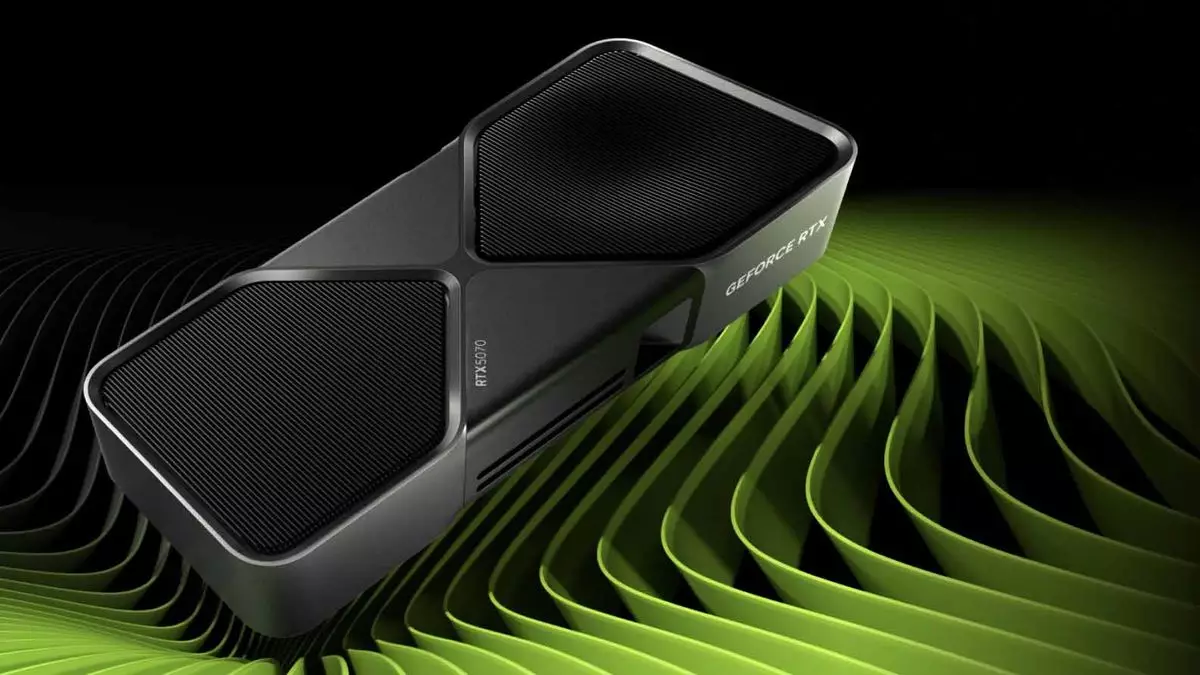The tech world is abuzz with discussions surrounding Nvidia’s latest reveal at CES 2025: the GeForce RTX 5070. Positioned as the entry-level option within the freshly unveiled 50-series lineup, the RTX 5070 has garnered attention for some striking performance claims. As the excitement builds ahead of the GPU’s official release in February, early impressions from industry insiders, particularly PCGamesN, suggest that the RTX 5070 may indeed deliver exceptional graphics performance—albeit with a necessary degree of skepticism.
Nvidia’s CEO, Jen-Hsun Huang, claimed during his keynote that the RTX 5070 could deliver performance levels akin to the higher-end RTX 4090 but at a significantly lower price point of $549. This announcement has naturally piqued the interest of gamers and tech enthusiasts alike. Initial testing conducted by PCGamesN during CES showcased the RTX 5070’s capabilities, with reports indicating that it even surpassed the RTX 4090 while playing the new title *Marvel Rivals*. Specifically, the RTX 5070 achieved performance metrics of roughly 240 frames per second (fps), compared to the 4090’s 180 fps.
However, while these figures are enticing, they should be approached with caution. The RTX 5070’s prowess can be largely attributed to its new Tensor cores and the enhanced DLSS (Deep Learning Super Sampling) 4 technology, which allows for Multi Frame Generation. By harnessing the power of artificial intelligence, DLSS 4 generates extra frames without requiring additional pixel computations, thus giving a significant performance boost. It is essential to recognize that such advancements raise questions about the future of traditional raster graphics rendering, an area where Nvidia has been gradually pivoting toward AI-centered approaches.
DLSS 4 represents a paradigm shift in how graphics are rendered, leveraging available game data and artificial intelligence to generate additional frames. This innovation effectively allows the RTX 5070 to deliver an experience that feels more fluid and dynamic. During the CES demonstration, attendees had the chance to compare two systems: one equipped with the RTX 5070 utilizing DLSS 4 and another with the older RTX 4090 relying on a conventional rendering technique.
Despite the favorable comparative performance observed in this specific instance, some crucial factors were not disclosed, such as the specifics of the CPU used in each system. Without this information, it remains challenging to determine if the exceptional performance of the RTX 5070 is replicable across varied hardware configurations and game titles. Critics are quick to point out that the RTX 5070’s advantages may not be universal, primarily due to the fact that not all games will be optimized for DLSS 4. Moreover, without DLSS 4, the differences between the RTX 5070 and RTX 4090 could appear far less impressive.
There is a broader implication to consider: while some titles, particularly those like *Marvel Rivals*, appear to be engineered to maximize the RTX 5070’s efficiency, real-world performance can vary significantly across different gaming environments. Nvidia remarked that the performance gains observed may not hold in games that do not support DLSS 4 optimization as effectively. Thus, while the RTX 5070 undoubtedly represents a significant leap in capabilities, gamers should be prepared for variable performance depending on their choice of games.
Ultimately, this leads to an intriguing discussion regarding pricing in the future of gaming GPUs. If the RTX 5070 can deliver performance levels that previously demanded a far higher investment, it opens the door for many gamers to experience high-fidelity gaming without the exorbitant price tags historically associated with top-tier graphics cards. As long as consumers understand the significance of DLSS 4 and the impact of game optimization, the RTX 5070 appears to stand at the crossroads of affordability and performance.
The Nvidia GeForce RTX 5070 is undeniably generating excitement. With its impressive early performance results and the promise of accessible high-end gaming, it has the potential to redefine the landscape of consumer GPUs. However, the initial test findings should not be viewed as gospel. Emphasizing AI-driven rendering technologies like DLSS 4 may revolutionize how we perceive graphics performance, yet the practical application across varying game titles and systems may differ. As we await the full release and further testing, gamers will do well to maintain a balanced perspective on this promising technology.

